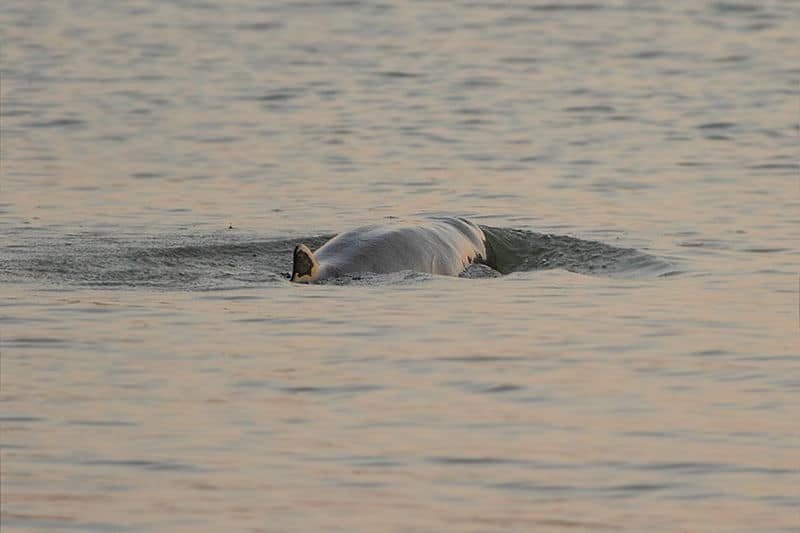Irrawaddy Dolphin Facts
- The awesome Irrawaddy Dolphin is a both truly fabulous, and highly distinctive looking cetacean. Sadly, however, the creature also has an extremely disjointed population concentration.
- Sir Richard Owen first identified this fascinating mammal back in 1866. But, at that time, the amazing creature was believed to be, and thus misidentified as, a member of another species.
- This mistake occurred due to an extreme similarity in physical appearance between the mammals. As a result, the two species were not recognized as separate and distinct until 2005.
- Because of its scattered population, scant numbers, and interactions with humans, the IUCN currently lists it as Endangered.
Related Species
Vaquita
Irrawaddy Dolphin Physical Description
Unlike many mammals, the truly remarkable Irrawaddy Dolphin displays no noticeable signs of sexual dimorphism. This fact further makes it one of the few cetaceans for which this holds true.
Furthermore, the marvelous mammal remains relatively small compared to other species of dolphin. That’s because this amazing creature only attains an average length of about 7.5 ft (2.3 m).
In addition, its overall coloring is a striking combination of two distinct patterns. These consist of dark gray to dark blue above, and significantly paler on the underside, with no precise pattern.
Also, its flippers grow long and broad compared to related species, while its large head and melon display a decidedly non-prominent beak.
Finally, it has the distinction of being the only known variety of dolphin to possess a blowhole to the left of the midline, opening towards the head.
- Kingdom: Animalia
- Phylum: Chordata
- Class: Mammalia
- Order: Artiodactyla
- Family: Delphinidae
- Genus: Orcaella
- Species: O. brevirostris
Irrawaddy Dolphin Distribution, Habitat, and Ecology
Above all, the extremely distinctive Irrawaddy Dolphin has a truly unusual pattern of distribution. That holds true because of the fact that it inhabits both salt water and fresh water.
In addition, this magnificent animal is also distributed in a widely broken pattern. Further, this unique pattern extends across the coastal Indian Ocean from India to Indonesia, in Asia.
Technically, the remarkable mammal represents a sea dwelling species of cetacean. However, many individuals also inhabit freshwater regions, such as bays, estuaries, and even rivers.
Also, m like related species, it feeds on a wide variety of local species, including small crustaceans, cephalopods, and fish.
Although it typically travels in small groups of 2-3 individuals, occasionally larger groups of up to 25 will group together to hunt.
Species Sharing Its Range
Check out our other articles on Shark Bay, Phallus , Chinchilla, Fly Geyser, 6 Startling Evolutionary Adaptations, Rainbow Grasshopper, Mangrove Monitor, Little Auk

